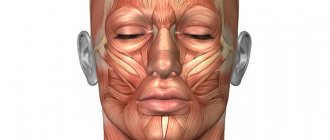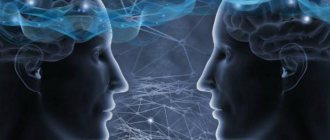To quickly switch from one emotional or mental state to another, you can use many methods: self-control, self-hypnosis, sports or sleep (active and passive discharge), tears, switching or turning off attention, rationalization, situation analysis, auto-training, attitude change, meditation, relaxation and other. And even prayers from the perspective of psychology are a method of self-regulation. This is how they help, because they allow a person to come to consciousness and find a rational solution. What other methods of self-regulation are there? Let's figure it out.
Direct and indirect methods
Direct methods
Direct methods of influencing the psyche include music. Yes, its effectiveness was experimentally proven back in the 19th century by V. M. Bekhterev, although intuitively music has been used for treatment purposes since ancient times.
The second method is libropsychotherapy, or treatment with special literature. Books draw a person into a fictional world, make them experience the emotions of the characters and distract them from their own experiences.
Indirect methods
- Work and sports are the most effective indirect methods. They provide relaxation, charge with positivity and distract from worries.
- Imagotherapy, or role-playing games, is a method of correcting a condition through personal changes. In the process, new character traits are formed, the personality structure and the experience of problems change.
- Suggestion and self-hypnosis. The spoken words are not criticized, but are accepted by default and become a person’s internal attitude, which corrects his activity.
As you may have noticed, these methods do not necessarily relate to self-regulation, but there are methods exclusively for independent use that develop the ability to self-government. For example, autogenic training. You will also learn about this from the article, but a little later.
Human feelings and emotions
A person’s internal experiences are divided into affects, emotional moods, and feelings. What is their difference?
Affects are short-term outbursts of emotions (anger, fear, despair). Such processes have a strong impact on the functioning of internal organs, especially the cardiovascular system. Affects manifest themselves in a specific situation and last only a short period of time.
Affects can leave deep marks on the mind, so people are advised to change their environment to improve their condition. A person can rarely influence the cause of the feeling of affect; it is an involuntary reaction of the nervous system.
Emotional moods are a state of lower intensity than affects, but longer lasting. They are associated with the highest human needs. These states can relate to both the present and the future, and can influence actions that have not yet been committed.
Feelings are distinguished by the stability of processes, they allow you to make your attitude towards life constant, and they include the most important regulatory function. It is interesting that feelings can come into conflict with affects, but they usually win. True love is stronger than temporary resentment. So the mother, even scolding the child, continues to love him.
True and lasting feelings fill life with meaning and help in achieving high goals and peaks in life.
It is known that a large number of negative emotions causes a state of stress, which is harmful on a physical and mental level. Conditions of constant conflicts and a series of stresses are considered dangerous; they lead to neuroses, sleep disorders, psychoses, and depressive states. This is why emotional self-regulation is important; strong emotions harm a person.
At the physical level, stress leads to stomach diseases, ulcers, hormonal imbalances, asthma attacks, arrhythmias, increased injuries, and the development of harmful addictions. In addition, the emotional state of parents affects the health of future generations.
Tension and stress are caused by the following factors:
- Acceleration of the pace of life;
- Information overload;
- Urbanization;
- Inactivity.
Technological progress has positive and negative sides. Advances in technology make life easier, but they also cause harm to health, for example, an excessive passion for computers leads to a lack of outdoor games, which previously had a lot of emphasis. Now they are trying to restore a healthy lifestyle; there is a fashion for gyms and healthy eating. However, it is worth remembering that simple food and simple movement are useful - running, physical labor.
Of course, a state of stress can also be the cause of personal troubles or be caused by professional stress and worries. Representatives of the following professions are most susceptible to stress loads: miners, police officers, journalists, builders, doctors (especially dentists), actors, politicians, drivers, school teachers. The work of employees of libraries and museums is considered the most relaxed.
The main danger of stress is that in this state, free radicals are formed in cells, which can even lead to the growth of cancer or the proliferation of bacteria and viruses, and the body weakens. Smoking also stimulates the growth of radicals, so it is not an effective way to combat stress.
It is important to find your own ways of emotional self-regulation and interruption of emotional stress. They can be simple: communication with a child, a cat, a walk, contemplation of nature, the main thing is to switch gears. Let's move on to consider psychological techniques.
Psychotechnicians for behavior correction tasks
Decreased arousal
Effectively use:
- distraction and switching of attention;
- goal setting (consider different options);
- physical relaxation;
- psychomuscular and autogenic training;
- breathing exercises for relaxation.
Resource Activation
Effectively use:
- autogenic training for mobilization;
- increased motivation;
- breathing exercises for activity;
- plot performances;
- memories of active emotional states and the situations that caused them;
- mental and sensory stimulation;
- heterosuggestion.
Mental desensitization
Effective:
- presentation of successful behavior;
- self-hypnosis of confidence and neutral attitude towards harmful factors;
- deliberate passive attitude.
Relieving Emotional Stress
Effective:
- listening to music;
- relaxation;
- substitution;
- rationalization;
- fantasy.
Recuperation
Effective:
- meditation;
- suggested dream;
- self-hypnosis for quick recovery.
Regulation of the autonomic system
Effective:
- auto-training;
- heteroregulation;
- breathing exercises.
Theories and levels
There are several current theories of self-regulation, each of which has certain features.
System-activity regulation
Its author is L. G. Dikaya. It is simultaneously considered as a system and an activity. The author identified 4 levels of self-regulation:
- Involuntary - regulations that are based on activity that manifests itself during inhibition and excitement of the psyche. The individual cannot control involuntary reactions, but their duration is short-lived.
- Conscious - due to constant discomfort, a person faces the choice of developing self-regulation or performing some action to get out of the current situation. He sets priorities, changes the value of needs, evaluates motives. At the same time, self-programming, self-persuasion, self-hypnosis, introspection, and self-order begin to work. Personal and cognitive changes occur.
- Conscious regulation. The person feels discomfort and can realize the level of negative state. After realizing the situation, the subject makes a choice between ways to change his own state. This can be a manifestation of willpower, auto-training, psychophysical exercises, self-control.
- Arbitrary level. Self-regulation manifests itself only under severe stress and extreme fatigue. This may include holding your breath, muscle tension, convulsions, speech activity, emotions, gestures that cannot be controlled.
System-functional theory
Its author is A. O. Prokhorov. He viewed the processes of self-regulation as a change in mental states from one to another. Manifests itself in two ways:
- The functional structure of the processes of regulation of mental state develops gradually.
- The subject uses conscious methods of regulation to achieve the required state. To complete the task, the subject goes through several intermediate states.
The success of the technique is influenced by the adequacy of the image that was presented and the degree of awareness of the current state. To describe the current situation, several factors must be taken into account:
- breathing rhythm;
- bodily sensations;
- thoughts, feelings;
- imagination, memories;
- perception of time and space.
After accurately understanding the current situation, you can develop a technique for transitioning from a negative state to a necessary one.
Autogenic training
The method was developed in 1930 by the German psychotherapist I. G. Schultz. In Russia, the method has been used and studied since 1950.
At first, auto-training was used only for the treatment of nervous disorders, but gradually began to be used for preventive purposes. Today this is a popular method of unloading the emotional and mental state in all areas and activities: study, work, relationships, and so on.
Auto-training in the modern sense even has its own subtypes:
- psychomuscular training (PMT);
- psychotonic training (PTT);
- psychoregulatory training (PRT).
But the basis of any auto-training is a relaxation mechanism, that is:
- mastering muscle relaxation techniques;
- development of skills for sensing heat and cold in the body;
- increasing concentration and volitional attitude towards the general condition of the body.
The purpose of auto-training is to relieve muscle and emotional tension, to instill in a relaxed state the development of volition.
I suggest you get acquainted with morning auto-training, which will charge you with energy and positivity for the whole day. You can perform it at any time, even immediately after waking up, while lying in bed. You just need to say the following words (installations). It is very important to speak on your own behalf in the present tense.
The text can be saved and printed as a reminder
Classification
In psychology, there are several approaches to classifying state self-management. L.P. Grimak identified the following levels of self-regulation:
- motivational;
- individual-personal;
- information and energy;
- emotional-volitional.
Motivational level
Any self-regulation mechanisms begin with motivation. Regulation and self-regulation of mental states are closely related to achievement motivation. Motivation is what motivates a person, and mental self-regulation is the ability to maintain the desired level of activity.
Individual-personal level
The level is mobilized when it is necessary to “remake” oneself, one’s attitudes and personal values.
Qualities that promote regulation:
- responsibility;
- self-criticism;
- determination;
- strength of will.
Information-energy level
The level provides the necessary degree of energy mobilization for optimal mental functioning. Types of self-regulation at the level:
- Catharsis. The shock of viewing works of art frees you from negative thoughts.
- Reacting reaction. Strengthening mental and motor activity.
- Ritual actions. The ritual is designed to set a person up for a good outcome of the event and provide emotional support.
Emotional-volitional level
Volitional self-regulation makes it possible to control one’s feelings and the ability to consciously maintain one’s well-being in extreme situations.
Emotional self-regulation is divided into two forms:
- voluntary (conscious);
- involuntary (unconscious).
Involuntary regulation allows you to relieve stress and anxiety intuitively. Conscious regulation is associated with target activity; a person uses special methods to restore emotional strength.
Self-hypnosis
In fact, the technique described above is self-suggestion. With the help of these words, your faith in your own strength and the implementation of your plans increases. You get set up for success and understand that everything depends only on you.
Self-hypnosis is always positive statements in the first person, spoken in the present tense. You can come up with your own up-to-date and customized settings. Self-hypnosis directly affects the psychophysiology of the brain, forces it to concentrate on the goal.
There are several principles for constructing phrases. You are addressing the subconscious, so it is imperative to follow them.
- Use positive and affirmative phrases and avoid “not” and “never”. For example, instead of “my head doesn’t hurt,” say “the pain has left my head.”
- Maximum specificity. Don't skimp on your words and sentences. Break a big goal into small ones. For example, “I am successful” is a common phrase. Decipher what this means in your mind.
- Try to replace abstractions. For example, not “the head has passed,” but “the forehead has cooled.”
- Do not complicate the wording, use simple words, most importantly, understandable to you.
- One phrase – maximum 4 words.
- Always only the present tense. The subconscious perceives this as already accomplished, and what is said actually happens.
Meditation
Meditation involves working with attention: relaxing it or, conversely, increasing concentration. The purpose of meditation is to relieve emotional stress and develop the ability to stop the flow of thoughts.
Focus on the score
Count slowly from 1 to 10, concentrating on each number. You shouldn't think about anything else. If you realize that your thoughts have again “fled away” into your problems, then start counting from the beginning. Count like this for a few minutes (without losing your way).
Focusing on emotions and mood
- Record your inner thoughts, inner speech.
- Stop her.
- Catch your mood and focus on it.
- Rate it: good, bad, sad, happy, average, upbeat.
- Now focus on your emotions. Imagine yourself in an elevated, joyful state. To do this, remember a joyful event in life, a pleasant image.
- Get out of the state of relaxation.
- Go through reflection, that is, evaluate your state and thoughts now and during the exercise.
The function of self-regulation in humans
Affirmation - what is it, definition
Managing emotions and behavior is impossible without self-esteem, ego concept, life priorities and level of aspirations. Character, temperament, mental characteristics and gender are important here.
Self-regulation in men and women
Even those who have not studied physiology know that women are emotionally more fragile creatures. They perceive situations and react to them differently.
Features of self-regulation
| In men | Among women |
| • Less susceptible to fear, anxiety, irritation, fatigue; • But more often they fall into depression, apathy and are characterized by loneliness; • Due to the biological basis of self-regulation, men have more methods for exercising it | • The psycho-emotional aspect is manifested to a greater extent than in men; • It is loneliness that can plunge you into a depressive state; • Management methods are social in nature |
The difference can also be seen in the direction of self-regulation. For men it is internal, for women it is external.
Features of gender response
The main factor influencing management features is the psychophysiological difference between the sexes. The process is also determined by the following aspects:
- gender cultural stereotypes;
- differences in the upbringing of boys and girls;
- specifics of activity;
- differentiation of social roles.
Levels of personality development, mental state, and age characteristics can also influence.
Trainings
Perhaps the most popular psychological technique today. There are many trainers and people willing to undergo training. Trainings are divided into separate profiles covering narrow topics. For example, training to improve stress resistance is popular. Most often they are directed:
- to increase self-esteem (or decrease to the correct level if necessary), emotional stability, self-confidence;
- formation of motivation to achieve success and behavior strategies under stress.
Functions and mechanisms
There are different self-defense mechanisms with a similar principle of operation. They act at the levels of organs and cells.
The main function of the method is to change mental activity, allowing the subject to achieve a state of balance and harmony. Thanks to this, a person can perform several actions:
- cope with any adversity that arises throughout life;
- control your condition in various conflict situations;
- restore your own strength;
- think rationally under stress.
Breathing exercises
There are many options for breathing techniques, but it is a mistake to believe that they are all aimed at slowing down mental reactions. On the contrary, there are exercises that activate the brain.
Relaxation exercises
The goal is to master conscious natural breathing, relieve muscle tension and tension, and calm emotions. I want to introduce you to some exercises.
"Rest"
Place your feet shoulder-width apart, straighten up, and inhale. As you exhale, bend down, relax your neck and shoulders (as if they were hanging calmly on their own). Stay in this position for 1-2 minutes. Breathe deeply, watch your breathing. Slowly straighten up.
"Conscious Breathing"
Sit comfortably and relax, but keep your back straight. Take your first shallow breath in and out. Then inhale and exhale a second time, but deeper. And for the third time, inhale with your whole chest, but exhale very slowly (one in three).
"Breathing under stress"
Breathing is rhythmic and combined with walking. The scheme is as follows: two steps - inhale, two steps - exhale. Gradually increase the duration of exhalation, that is, then it will be: two steps - inhale, three steps - exhale, and so on.
Arousal exercises
The purpose of the following exercises is to increase neuropsychic activity and activate resources.
"Lock"
Sit up straight, place your hands on your knees and clasp them together. Inhale and at the same time raise your arms up (palms facing up). Hold your breath for a couple of seconds, exhale sharply through your mouth and “drop” your hands on your knees.
"Getting ready for work"
You need to breathe according to a certain pattern described below. The first number is inhalation, the second (in brackets) is retention, the third is exhalation.
2(2)+2; 4(2)+4; 4(2)+5; 4(2)+6; 4(2)+7; 4(2)+8; 8(2)+5; 9(4)+5; 10(5)+5.
The emergence of self-regulation and its development
The child begins to consciously use self-regulation methods when he comes to understand his own “I”. This is determined during the period of 3 years of age. From this moment on, there is a continuous development of self-regulation according to certain dynamics. It is actively used in pedagogy for raising children.
Stages of development of self-regulation
| Age | Peculiarities |
| 3-4 years | Manifests itself in speech and motor ways of an involuntary nature, but voluntary ones are also possible in a ratio of 1:7 |
| 4-5 years | Games teach emotional control. Here you can already observe arbitrary methods (1 to 4 involuntary) |
| 5-6 years | Both types of self-regulation are in equal proportion. Thinking, imagination, use of memory and speech are actively used |
| 6-7 years | A normally developing child shows signs of self-correction and self-control. The species ratio changes again in favor of arbitrary methods (3:1) |
| further up to 20 years | Children continue to learn management methods from adults and improve them to suit their personal characteristics. |
| 20-40 years | Self-regulation is influenced by human activity. At this stage, volitional methods (switching attention, self-order) using communication are more often manifested |
| 40-60 years | Gradually, manipulations with attention are replaced by passive rest, bibliotherapy and reflection. |
| over 60 years old | The way out of discomfort is through passive discharge, communication, and understanding the situation. |
Type of children's self-regulation
The development of management is influenced by social aspects, age-appropriate activities, and even the environment. The main driver of development can be called motivation. The higher it is, the more perfect the regulation system.
Relaxation
The goal is to realize, find and relieve muscle tension; learn muscle control.
"Tension-relaxation"
Stand up straight, focus on your right arm and tense it. After a few seconds, release the tension. Do the same with your left hand, then with both at the same time. After - with the right leg, left leg, both legs, lower back, neck.
"Muscle Energy"
- Bend your right index finger as much as possible (without damaging it).
- Feel where the tension goes. The finger itself, the hand, the elbow, the neck?
- Now try to gradually ease the tension: in the neck, shoulder, elbow. But the finger is still bent and tense.
- Release tension from your other fingers. We don't touch the index finger.
- Managed? Release the tension from your index finger.
- Do the same with your left leg (press your heel into the floor, do not overdo it).
- Where does the tension go? Gradually relax, as in the case of a finger.
- After this, tense your back. I will make a reservation that this exercise is not suitable for people with a bad back (hernia, osteochondrosis). If your back is healthy, then bend over and imagine that a box is placed on your back.
- Where does the tension go? Gradually relax your entire body, last but not least your back.
Involuntary visualization
The goal is distraction from stressful situations and obsessive thoughts by means of involuntary attention against the background of relaxation.
- Close your eyes and look as if at the back of your eyelids. In a couple of minutes you will see dots, spots, lines.
- After some time, these spots may begin to form into some images, faces, objects.
- It is important to do this in a state of relaxation, then gradually obsessive thoughts will come out through these barely noticeable images.
- Keep your face and body relaxed. Don’t try to draw something yourself, but just look, as if from the outside, at what appears.
- This exercise requires skill. During the first practices, attention often slips; you need to consciously return it to the points.
- Then open your eyelids and assess your condition.
"Anchoring" method
A self-regulation technique associated with conditioned reflexes, that is, the “stimulus-reinforcement” scheme. Surely it has happened to you that a song or smell evoked specific memories and emotions. This is your “anchor”, which can be positive or negative. Someone's voice or gesture can also be an anchor.
Self-regulation in the form of anchoring involves the conscious setting of “anchors” and their reasonable use, that is, the release of the necessary resource in a stressful situation.
- Identify a situation in which you need resources.
- Determine specifically what resource is needed (confidence, courage, determination, etc.).
- Ask yourself: “If I had this resource now, would I really use it?” If the answer is yes, then you made the right choice and you can move on. If you make a mistake, then select a new resource.
- Remember a situation when you had this resource.
- Choose three “anchors”: what you hear, what you feel, what you see.
- Change your position in space, reproduce in your memory the situation when you had the resource, achieve a peak state.
- Exit it and return to your original place.
- Recreate the situation again and attach three “anchors”. Hold them as long as needed.
- Check the success of the operation: “turn on the anchors”. Are you getting into the desired state? If yes, then everything is fine. If not, repeat the previous point.
- Determine the signal that will hint to you in a difficult situation that it is time to “drop anchor.”
- If necessary, immediately create a complex of evoked states, emotions, and feelings.
Self-regulation includes 3 main stages
Self-regulation contains 3 main stages:
- Mindfulness. The ability to be aware of your body.
- Concentration. Concentrate (have the skill of switching your attention from one process to another).
- Sixth Sense. Follow “healthy” spiritual impulses (intuition).
Having mastered these stages, self-regulation will increase your intellectual capabilities, strengthen psychological stability and enable you to quickly maneuver between emotions.
How does the nervous system recover? Fortunately, nature has endowed our nervous system with the ability to get rid of everything foreign. Stress, in the form of accumulated tension, is unnatural for the psyche.
Therefore, our nervous system always strives to get rid of it. True, to start the self-purification process, it needs to create certain conditions.
Afterword
Self-regulation really works. The body and brain are one, as psychosomatics has long shown. Therefore, you should not be skeptical about exercises that seem to have little to do with psychology.
But you need to approach the development of self-regulation carefully and following a number of rules:
- clearly see the goal and stick to it;
- the process of developing a skill must be consistent and purposeful;
- be prepared for high energy costs, especially at the beginning of the journey;
- despite consistency and purposefulness, adhere to diversity in the development of self-regulation methods.
It is impossible to create one set of self-regulation methods for a lifetime, since the very ability to self-government is associated with such changeable elements as needs, personality and character traits, motives, and more. You can read more about the intricacies of developing self-regulation and what it is in the article “Self-regulation - what is it in psychology. Concept, types and functions."
The techniques presented in the article were borrowed from the book by T. G. Volkova “Workshop on the psychology of self-awareness and self-regulation: methodological materials for the course.” You can find this literature and learn more about other techniques and methods of self-regulation.
What is self-regulation
Self-regulation implies an assessment of the situation and adjustment of activity by the individual himself, and, accordingly, adjustment of the results of activity. Self-regulation can be voluntary or involuntary.
- Voluntary implies conscious regulation of behavior in order to achieve the desired goal. Conscious self-regulation allows a person to develop individuality and subjectivity in his activities, that is, life.
- Involuntary is aimed at survival. These are subconscious defense mechanisms.
Normally, self-regulation develops and forms along with a person’s personal maturation. But if the personality does not develop, the person does not learn responsibility, and self-awareness does not develop, then self-regulation, as a rule, suffers. Developing self-regulation = personal development.
In adulthood, thanks to self-regulation, emotions are subordinated to the intellect, but in old age the balance shifts again towards emotions. This is caused by natural age-related decline in intelligence. Psychologically, old people and children are similar in many ways.
Self-regulation, that is, the choice of optimal implementation of personal activity, is influenced by:
- personality traits;
- external environmental conditions;
- goals of activity;
- the specifics of the relationship between a person and the reality around him.
Human activity is impossible without a goal, but this in turn is impossible without self-regulation.
Thus, self-regulation is the ability to cope with feelings in socially acceptable ways, accepting norms of behavior, respecting the freedom of another person, maintaining safety. In our topic, the conscious regulation of the psyche and emotions is of particular interest.









